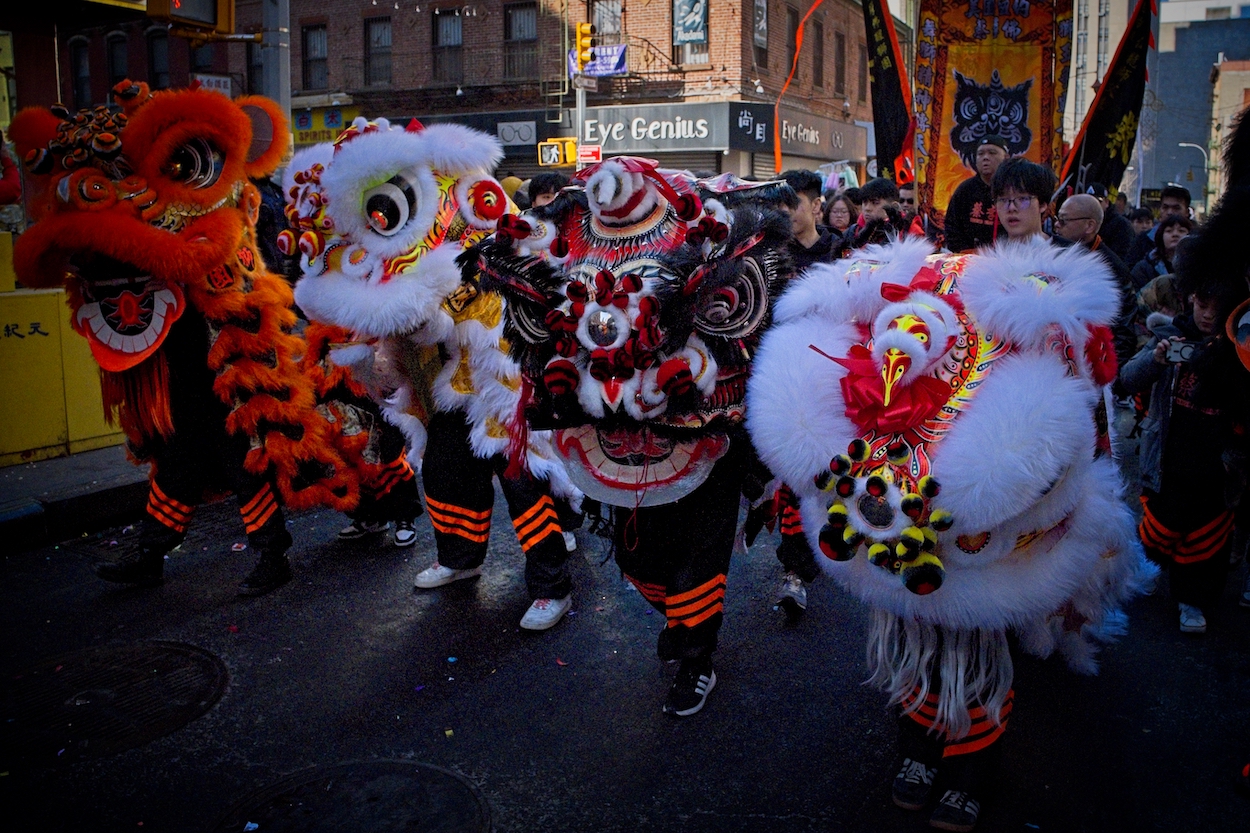In Manhattan's Chinatown, the dances usually take place on Mott and Pell, Doyers and Elizabeth, Bayard and East Broadway. In 2025, they were held on Wednesday, January 29. The event was blessed with a brilliant sunshine.
Businesses prepare small red envelopes filled with money and hand them to the lion dancers as they enter their premises. This is to bring good luck and fortune to the businesses, and the dancers are well rewarded.
For larger photographs:













CNY_2025_WT10_VIG.jpg)










